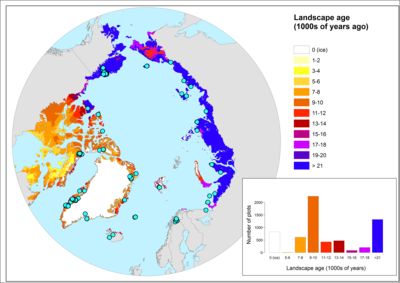Past glaciation influences current vegetation patterns in the Arctic
Both species richness and genetic diversity depend on glaciation history

The Arctic is warming rapidly, and this may have big impacts on the animal and plant species living there. To be able to understand current and future changes, it may be very helpful to look back in time and see how previous climate fluctuations affected the arctic species.
PhD student Lærke Stewart from the Department of Bioscience has together with her collaborators investigated how past glaciations have affected the current species richness and genetic diversity of Arctic plants. The team studied the effect of glaciation on both at local and regional scales. They hypothesised that more recently deglaciated areas would have lower species richness and genetic diversity because plants have had less time to spread to and establish in these areas.
"This study shows us that we can explain overall patterns of species richness with large scale climate variables. But if we want to really understand the mechanisms underlying these general patterns, we need to expand our knowledge of what drives species distributions and co-occurrences at the very local scale”, says Lærke Stewart.
The study "The regional species richness and genetic diversity of Arctic vegetation reflect both past glaciations and current climate" by Stewart et al is published in Global Ecology and Biogeography.

Map of time since ice retreat since the Last Glacial Maximum across the Arctic. Turquoise dots show the distribution of vegetation plots collected.
